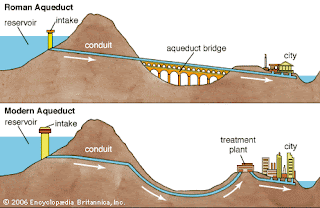- He saw the ground shake like it was being consumed beside the ocean(Praeterea mare... repelli videbamus), and he also stated that along the shore the sand contained animals that had dried up from the sea.(multaque animalia maris...detinebat)
- Next, Pliny describes how black clouds formed and how the lava was shooting out of the volcano like lightning (latere nubes...ignei spiritus tortis...fulguribus...) He also describes how ashes were rare but a dense fog was beginning to form(densa caligo tergis imminebat).
- Pliny tells his mom to turn aside so they won't get trampled on since the streets were filled with people frantically running and it was so dark out(Deflectamus...turba in tenebris obteramur.) However they aren't able to sit down because it became so dark that it looked like night, which Pliny compares to a light going out in a closed room.(illunis aut nubila...locis clausis lumine exstincto)
- He observes the cries of babies, women, and men,(Audires ululatus, feminarum, infantum, virorum...) who are searching for people(alii parentes alii liberos...requirebant.) Pliny tells us that some people were found by the sound of their voice.(vocibus noscitabant)
- Lastly, Pliny states how in the end people were praying because they were fearing death.(metu mortis mortem precarentur.)
Background Research:
- Mount Vesuvius is a volcano that is located in Southern Italy near Naples. It's most famous eruption was on August 24th, 79 A.D. This eruption destroyed Herculaneum and Pompeii, covering the cities with volcanic ash. Roughly 16,000 people were killed during the eruption including Pliny the Elder. These cities were completely destroyed and were never built back again. The only evidence of ancient life remains buried under molten rock, icluding the remains of people who were buried alive. Mount Vesuvius is still active today, however the most recent eruption occured in 1944. Today the area around Mount Vesuvius is densely populated.




